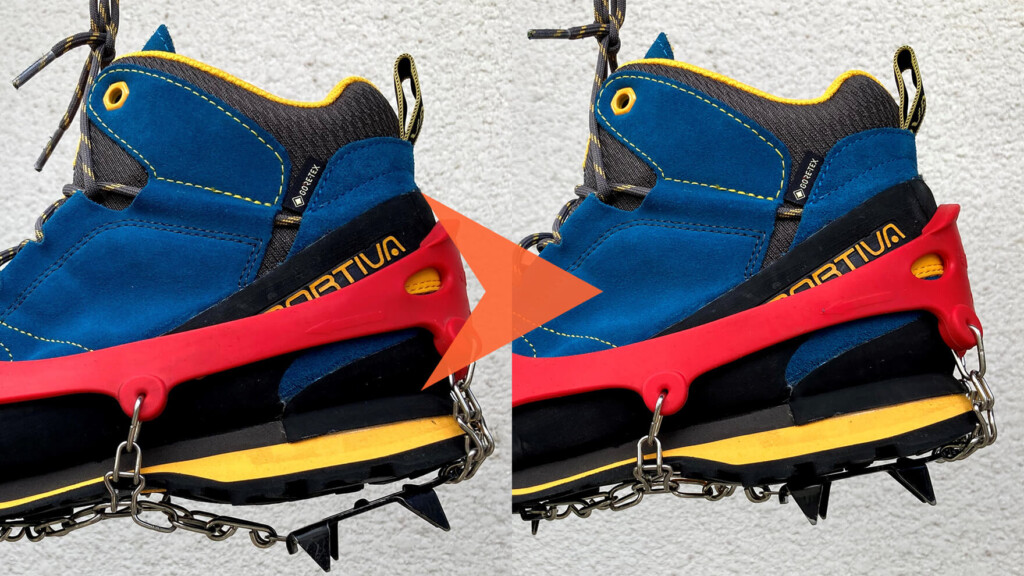
[Dream DIY] Cinderella fit tuning with chain spikes
Chain spikes are great for walking on ice and snow, so do they fit perfectly with your shoes?
Chain spikes are great for walking on ice, snow, or snowy fields. I started using it a few years ago and thought it was very convenient, but at the same time, I think it's actually quite a tricky gear.
That's because during the green season, I decided to walk through the snowy field on Hakuba-dake, so I put the chain spikes (L size) on my favorite approach shoes, and even though they were supposed to be firmly attached, the chain on the heel side sags slightly, which seemed to be slipping. I thought it was a big size, so I bought one size smaller (size M) of the same model, but it was small and no matter how I tried it, it ended up not fitting.
Without a doubt, I put on the L-sized chain spikes I had originally had and headed to the snowfield on Mt. Hakuba. As expected, the chain spikes shifted back and forth, left and right, making it very difficult to walk in, and in the end I had to re-wrap over and over again. Have you ever had this experience?
So this time, I tried out "Cinderella Fit Tuning with Chain Spikes" DIY, so I would like to introduce it to you.
table of contents
Why do chain spikes slip and sagging occur?
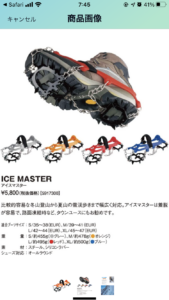 Why does chain spikes sagging occur in the first place? I think there are two main reasons.
Why does chain spikes sagging occur in the first place? I think there are two main reasons.
First, shoes come in small size variations in 0.5cm increments, while chain spikes come in small size variations, with 3-4 different size variations, covering all of the wide range of shoes. Of course, I'm not saying that it should be in 0.5cm increments just like shoes, but as you can see from the 12-prong clamp, it's best to have as many size adjustment functions as possible.
Another reason is that it can be attached to a variety of shoes and boots due to its convenience. For example, even if the shoes are the same 26.0cm, the shape and size of the shoes themselves differ between trekking shoes, approach shoes, and trail running shoes, so even if you purchase a shoe size recommended by the chain spike manufacturer, the fit will vary greatly depending on the type of shoes you wear. For this reason, it is very difficult for the chain spikes you purchase to fit perfectly into your shoes unless you are very fortunate.
For example, in the CAMP ICE MASTER, which I love, the shoes sizes EU36-38 (23.0-24.0cm) are S, EU39-41 (24.5-25.5cm) are M, EU42-44 (26.0-28.0cm) are L, and EU45-47 (29.0-31.0) are XL. In other words, there are only four types of shoes, and each size covers shoe sizes of 1.0 to 2.0 cm wide, regardless of the type of shoe, such as trail running shoes or mountaineering boots.
By the way, in my case, my shoes are EU45 size, so if I recommend, the chain spikes are XL size, but even the L size chain spikes also had sagging.
DIY overcomes the weaknesses unique to chain spikes with a wide range of compatible sizes
If you use shoes, if they are 1.0 to 2.0 cm larger than your feet or smaller, you won't get the fit you want. The same goes for chain spikes. Conversely, the focus here is that if you can adjust the chain spikes to fit the shape and size of your shoes, you will be able to achieve an ideal fit.
All outdoor gear is expensive and has the impression that they are well-established, so you may feel reluctant to make DIY changes. However, if there are problems such as "walking while walking" or "it doesn't fit perfectly with your shoes", this means that there are points that can be used in safety and functionality. We recommend DIY tuning to make mountain climbing safer and more comfortable.
*DIY is at your own risk. Make sure you check that there are no issues with safety or functionality before using it on site.
How to fit tuning chain spikes that anyone can do
Now, let's start by introducing a DIY method to try Cinderella Fit Tuning for Chain Spikes.
1: Diagnosis
I'll try putting chain spikes on my shoes. Observe it from the side and if there is sagging in the sole, we recommend cutting the chain links and adjusting them. At this time, it is a good idea to identify the chain to be removed and mark it so that it can be identified with an oil-based pen or similar.

2: Adjustment
The only tools needed for adjustment are two pliers and a nipper. As an example, we will explain how to remove one heel side link.
The photo below shows the chain spikes seen from the sole.

Use two pliers to transform the connection part,
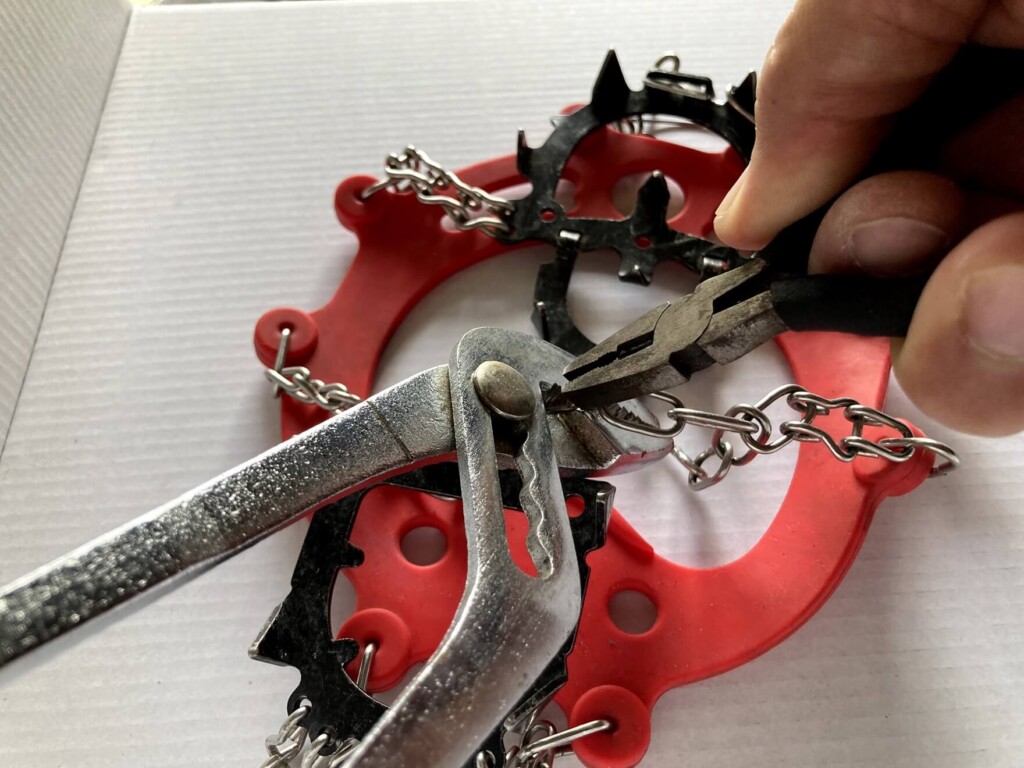
Leave a gap enough to remove the frame.
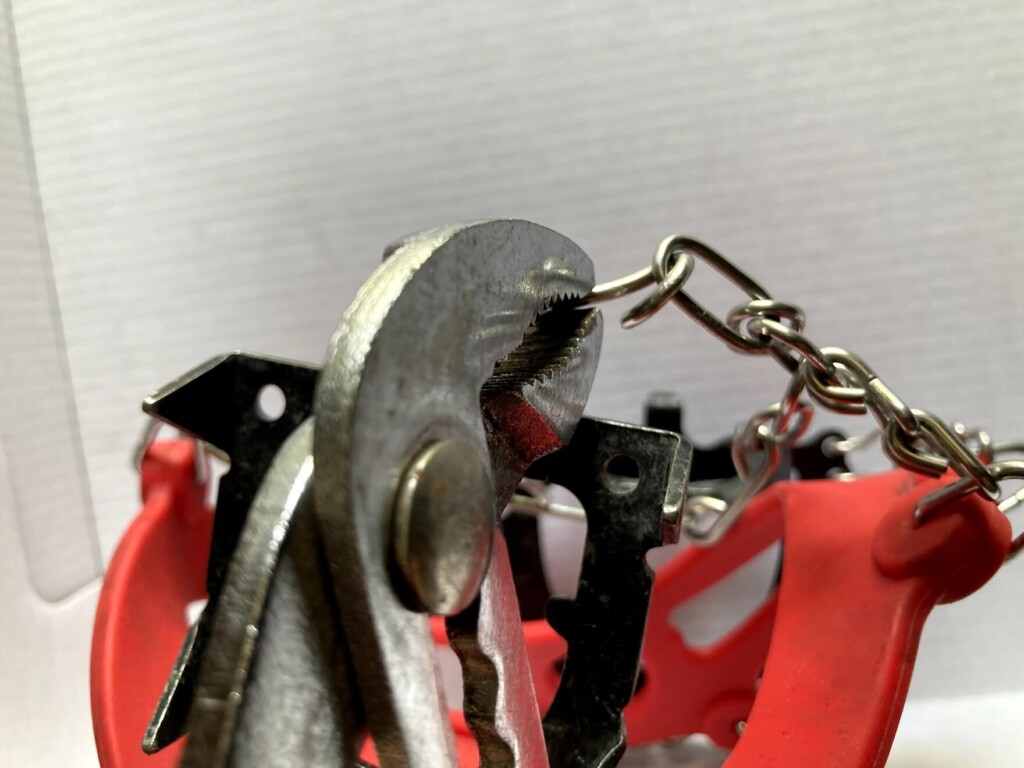
Cut and remove any unnecessary frames.

Removed frame (for one foot). Incidentally, the length of the frame is 15mm per piece.
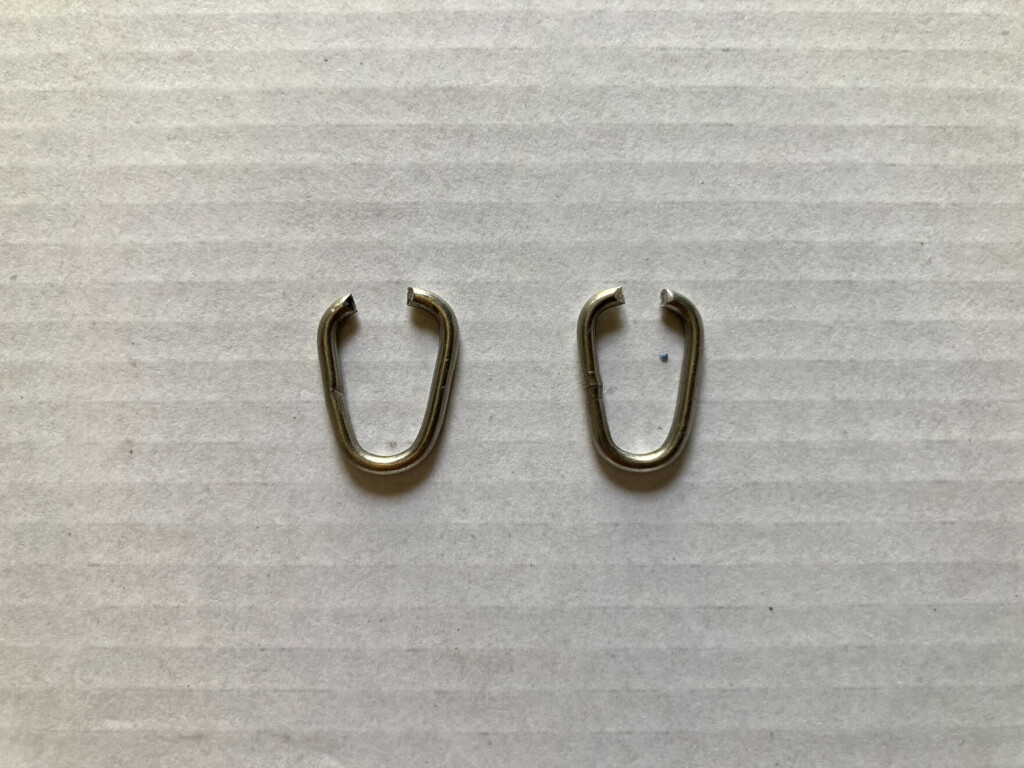
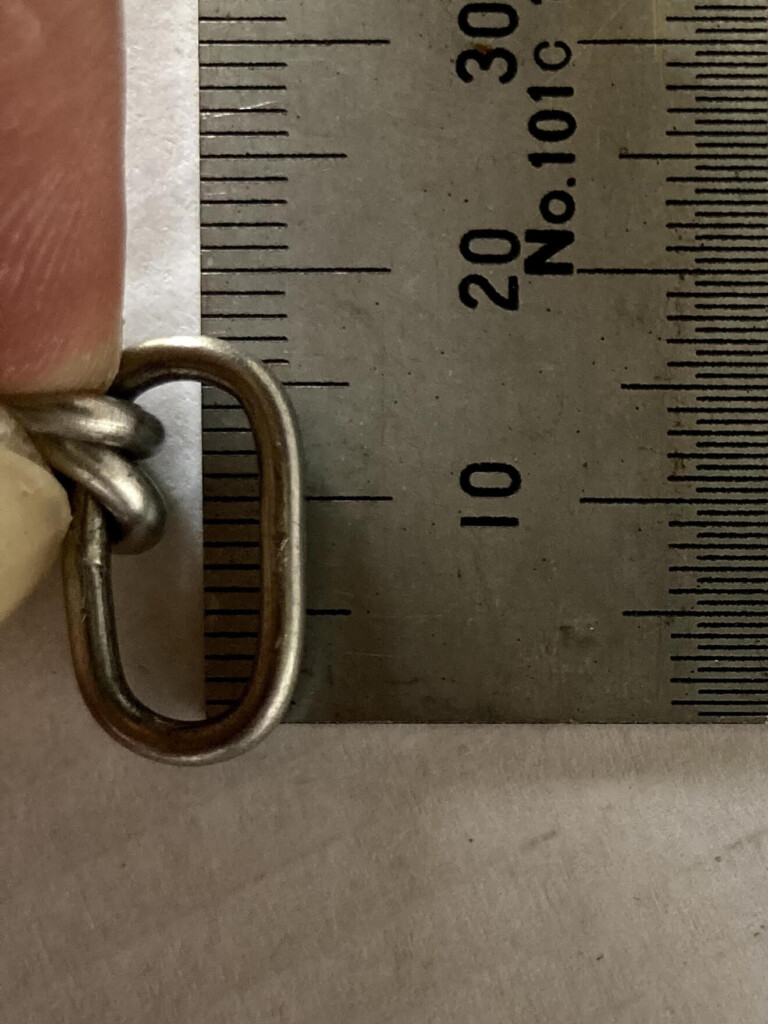
Finally, bend the connection back to its original shape and it's finished.

3: Confirm
After removing one of the links under the heels, the chain became shorter as shown below.
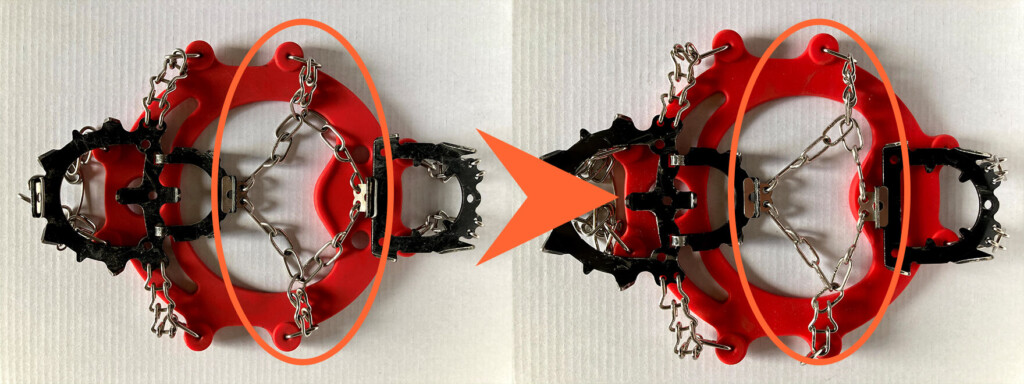
I'll try putting chain spikes on my shoes again. Once the sagging on the soles are removed, you're done. If there is still sagging, try again.
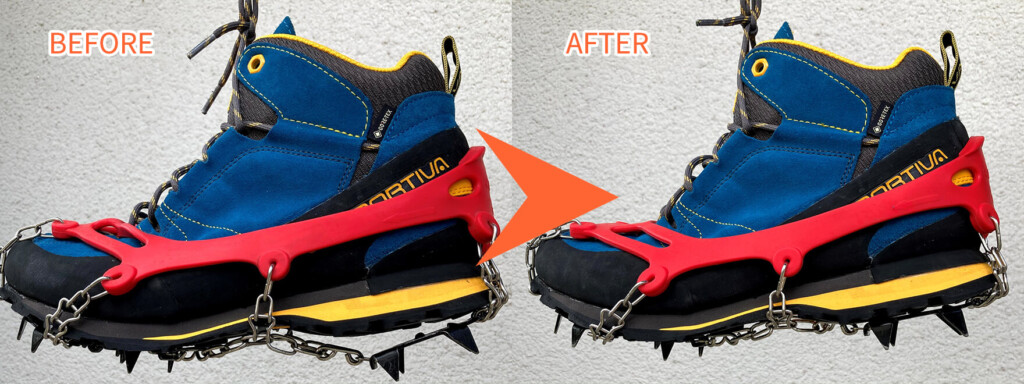
summary
This time, we introduced Cinderella fit tuning of chain spikes. By removing the chain links on the sole side of the commercially available chain spikes, we were able to achieve a "Cinderella fit" that fits perfectly with your shoes. If you're interested or have trouble fitting, please give it a try.
Again, DIY is at your own risk. Make sure you check that there are no issues with safety or functionality before using it on site.
We will continue to introduce the know-how and methods to make commercially available outdoor equipment and items you already own DIY, more comfortable and safer, so please look forward to it.
Awano Koichiro
Freelance engineer and consultant. Born March 4th, 1978 (age 43). He has 18 years of experience as a development engineer for automotive parts (suspension, steering, electrical parts, etc.). He also works as a mountain climbing guide and journal writer. He began climbing mountains during his university days and has over 25 years of experience. In recent years, he has been immersed in backcountry skiing, snowboarding and rock climbing, and is familiar with a variety of outdoor sports. I often go camping with my family and friends. He has long experience in motocross and mountain biking, and in 2016 he won the championship in the Downhill Masters Class (around 30 and above) of the All Japan Mountain Bike Championship.

